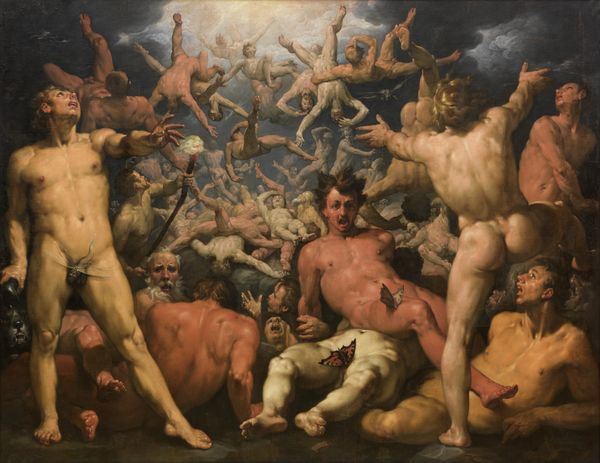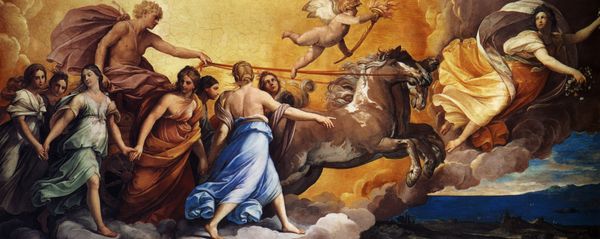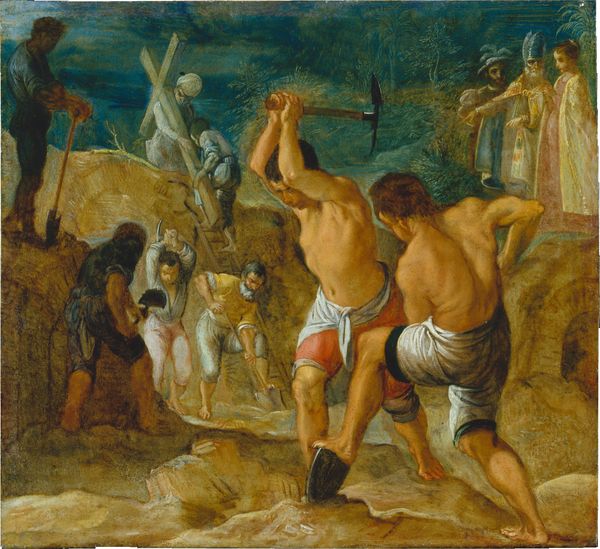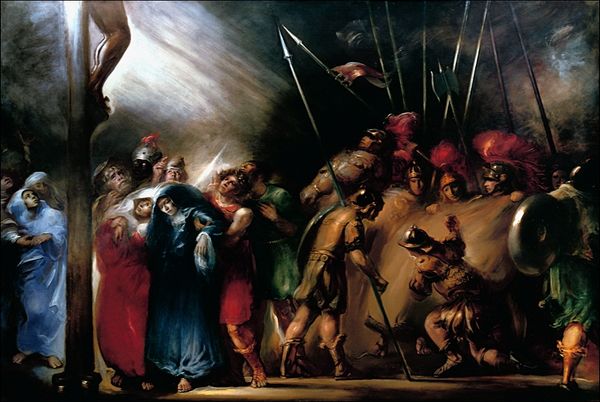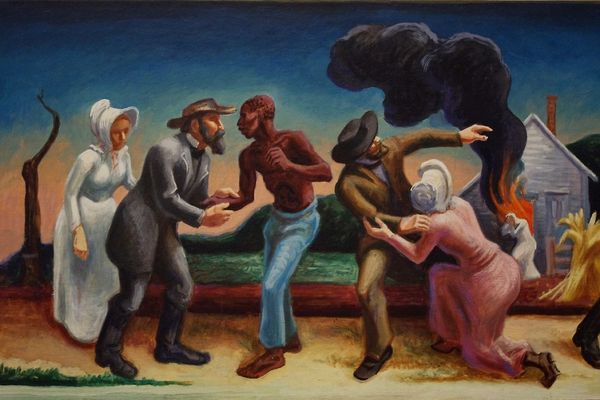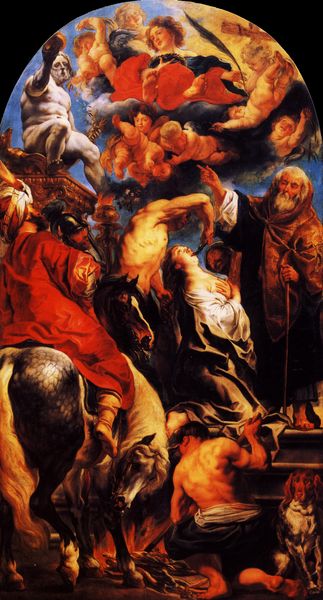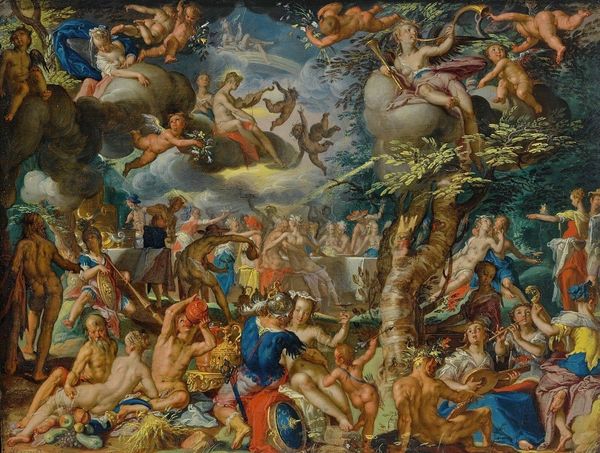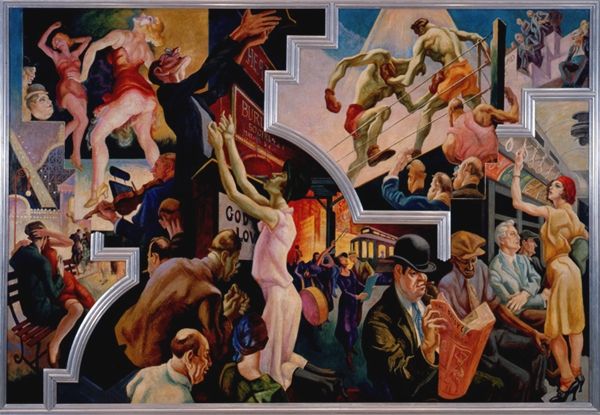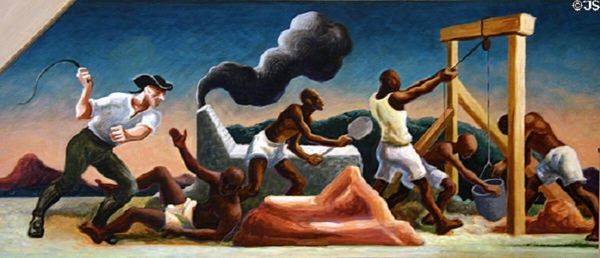
painting, oil-paint, mural
#
narrative-art
#
painting
#
oil-paint
#
figuration
#
handmade artwork painting
#
oil painting
#
mythology
#
history-painting
#
mural
#
realism
Copyright: Thomas Hart Benton,Fair Use
Curator: Here we have Thomas Hart Benton’s 1947 oil painting, "Achelous and Hercules," currently residing at the Smithsonian American Art Museum. Editor: It strikes me as a vibrant but strange tapestry, the muscular figures, the ox, and that curious cornucopia form. What does it all signify? Curator: Well, it draws from classical mythology. This illustrates the story of Hercules wrestling Achelous, a river god who could transform into different forms, represented here most notably as the bull. The fight arose over the hand of the princess Deianira. Editor: Ah, so the bull symbolizes Achelous, a contest of strength and perhaps, dominion over nature itself. The formal rendering is quite compelling, those dynamically contorted figures convey great energy. Curator: Precisely! And notice the cornucopia—horn of plenty, filled with fruits and vegetables, suggesting the prosperity that comes from controlling the land and, in essence, overcoming chaotic forces like Achelous. It represents a deep cultural need for agricultural abundance, echoed through centuries of symbolic imagery. Editor: Indeed, the symbolism is hard to ignore. I appreciate how the artist uses strong, curvilinear forms to suggest muscularity and strain, and how the muted tones offset the bright figures that form the story's climax. The overall impression gives it a mythical gravity. Curator: Consider also the socio-political context. Painted just after World War II, the work may symbolize the struggles of America and its ultimate triumph, mirroring Hercules' victory over unruly, natural forces. There are visual echoes of pastoral life, a potent signifier of a harmonious, post-war order. Editor: Yes, I observe the other elements—farmers toiling, fertile lands—all these contribute to a sense of optimistic renewal and mastery over the land, though I still find its somewhat restless, crammed composition distracting. It’s a dense arrangement of shapes! Curator: And there lies a strength in Benton's narrative—how he merges personal and collective symbolic interpretation into a sweeping picture, resonating long after the war ended. Editor: An impressive marriage of form and symbol, truly. It certainly rewards extended reflection.
Comments
No comments
Be the first to comment and join the conversation on the ultimate creative platform.
